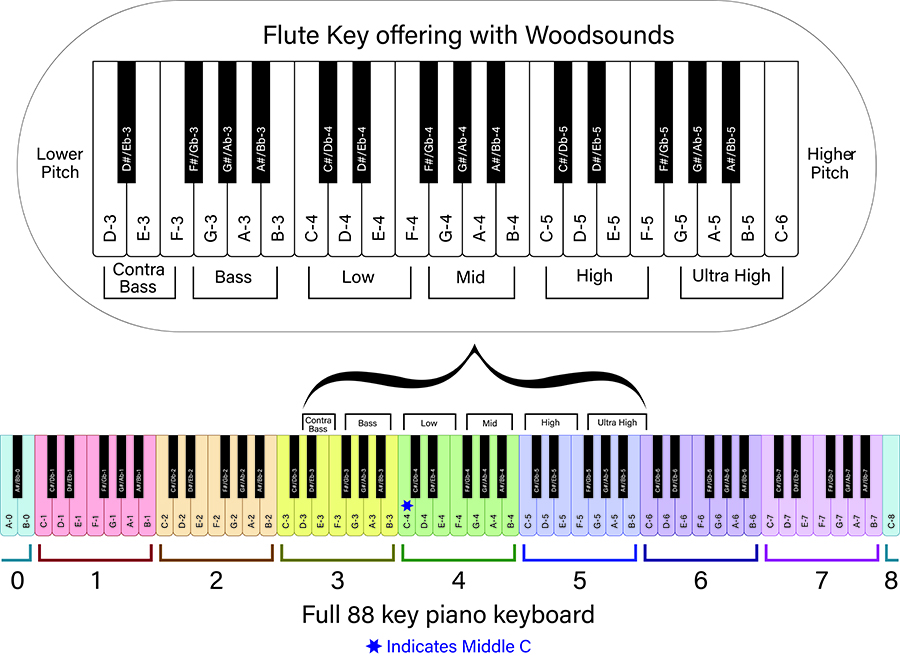Pitch Comparison in Sound and Ergonomics
The purpose of this page is to provide insight into the greater understanding of Flute Key and note pitch and the Ergonomics of hte Native American Flute.

Much thanks to Jonny Lipford of www.jonnylipfordmusic.com for the idea to color code the keyboard.
The length of the flute and much more importantly the distance from the mouth piece to the bottom hole and the distance between the finger holes of the bottom hand as well as the outside diameter are listed for each pitch. These are approximate numbers. They will be great for helping you determine if you will be able to play the flute or not.
Please note that as flutes get bigger, Easy Clean Mouth piece can be added to the flute to make it fit your ergonomic needs. Please connect with us if you have questions.
